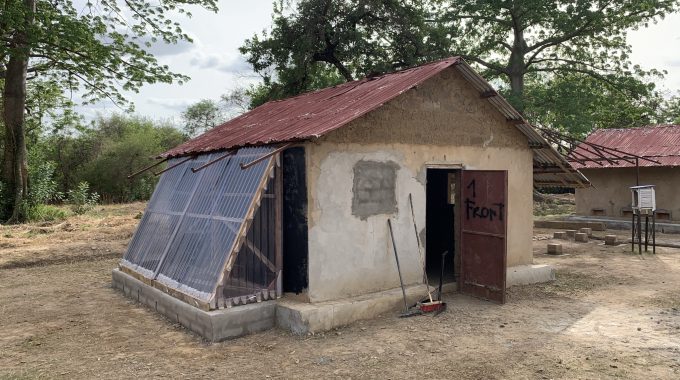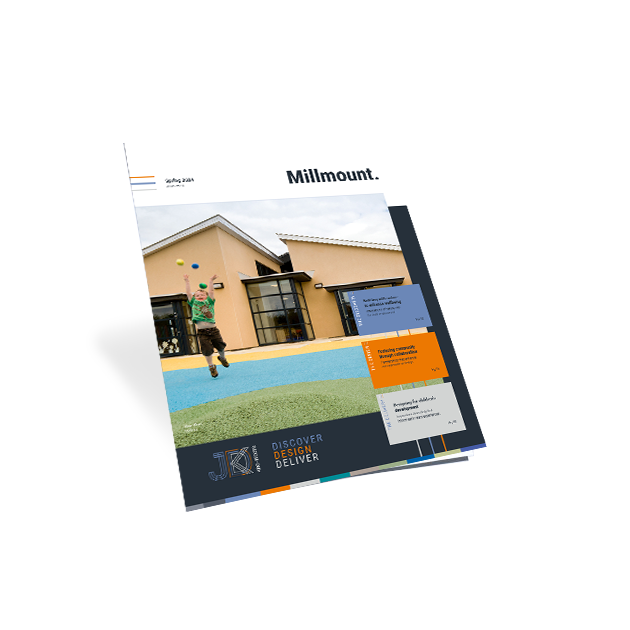
PASSIVE VENTILATION MAY BE A LIFE SAVER IN THE GAMBIA
Whilst most of us worried about vaccinations and Coronavirus during June, Newcastle-based JDDK Architects’ Associate Director, Matt Holmes, had more on his mind, having travelled to The Gambia to see if his designs for passive ventilation system in indigenous housing could help prevent the spread of malaria through mosquito bites.
The trip, undertaken with his partner, Dr Anne Wilson of the Liverpool School of Tropical Medicine, was to prove a concept Anne had developed jointly with the Royal Danish Academy of Arts of an affordable and easily installed passive ventilation system which would create sufficient air flow within native huts to force out warm air and the exhaled CO2 to which mosquitoes are attracted, replacing it with cooler external fresh air. With air flow already modelled by the Danish Academy using Computerised Fluid Dynamics (CFD) and the construction detailed by the rest of the JDDK Architects team, it would be up to Matt and Anne to build a prototype from which data could be collected for analysis.
Matt explained, “Malaria currently kills just under 400,000 people a year in Africa, and whilst mosquito nets help, they are notoriously hot and uncomfortable to sleep under so this could be a simple alternative.”
“In essence, the design is a Solar Chimney with a lean-to greenhouse with plastic sheets against the traditional mud brick structure. During the day, air heats up within it and vents through tubing or the chimney to be replaced by the cooler air and CO2 within the hut which is dragged in through air vents in the wall. At night, the thermal mass of the wall keeps the greenhouse air hot, whilst the inner wall is insulated to keep the hut cooler so the process continues.”
“But, whilst it’s easy to model the air flow and design from here, we needed to see how a test model could be built using locally-sourced materials which are readily available in the Gambia – hence plastic sheeting and plywood. We had been offered a site at the Medical Research Council’s (MRC) Walikunda Field Site where a variety of entomological research is being carried and adapted one of the existing huts with the solar chimney – in truth, we cheated slightly by bringing our own fixings but that was simply because of the time constraints of our two week stay.”
“The trip and the project were very successful and incredibly interesting trying to understand the challenges facing the local population, with the multiple Covid tests and self-isolation upon our return being a small price to pay! We’re now awaiting the results of the data collection which will measure temperature, humidity, air flow and mosquito numbers over the next 12 weeks to determine the next steps in the project.”
“We’re both very interested in changes in the built environment with Anne obviously looking at the health implications of this while my own interest is more in the design and architecture. Exposure to overseas architecture and lifestyle is priceless with the transfer of knowledge a two way process – we picked up as much construction knowledge as we gave to the people at Walikunda and we’re just hoping the initial successful results continue and the idea is taken up for the benefit of local people not only in the Gambia but also elsewhere in Africa.”
The Solar Chimney research project is a collaboration between the Liverpool School of Tropical Medicine, Durham University, Medical Research Council Unit, The Gambia at the London School of Hygiene and Tropical Medicine, and The Royal Danish Academy of Fine Arts – Schools of Architecture, Design and Conservation and is funded by the UK Medical Research Council Confidence in Concept scheme.
